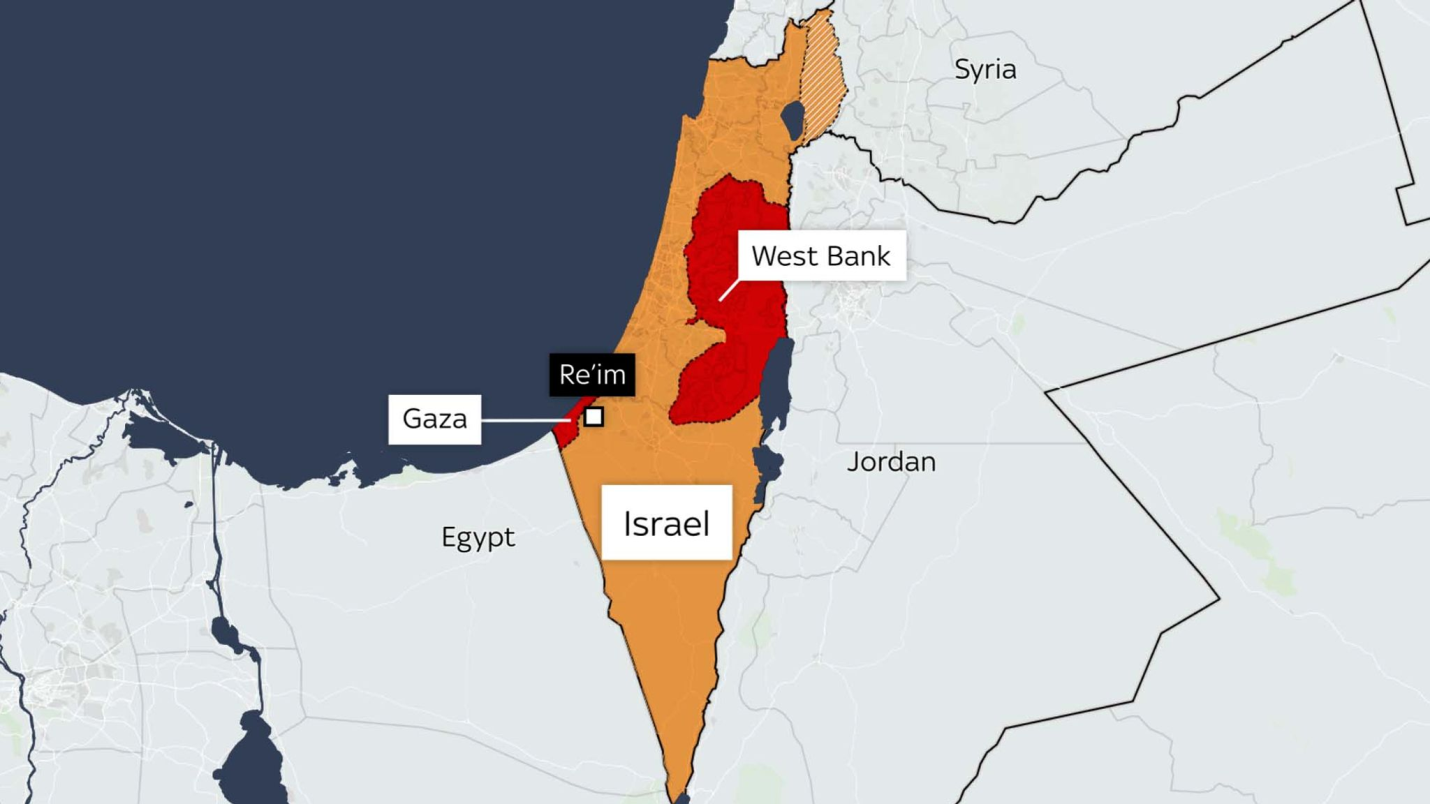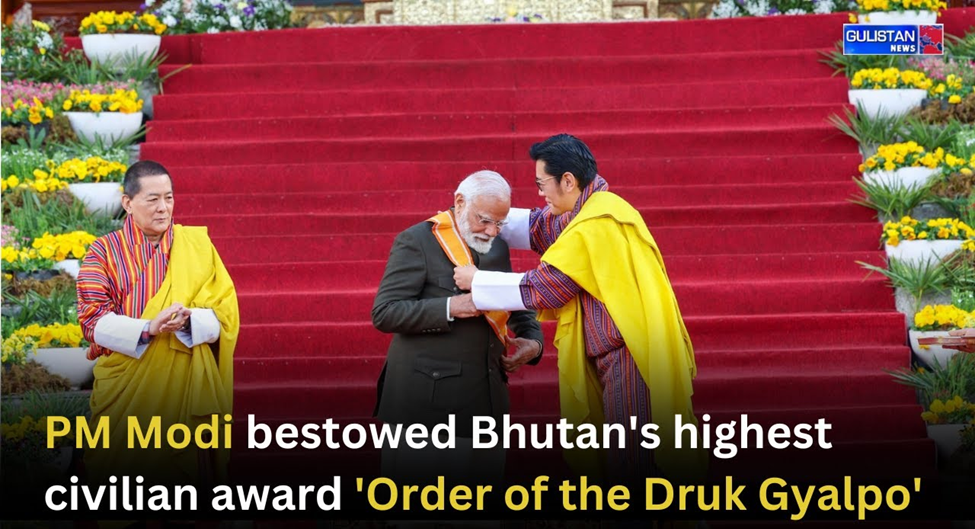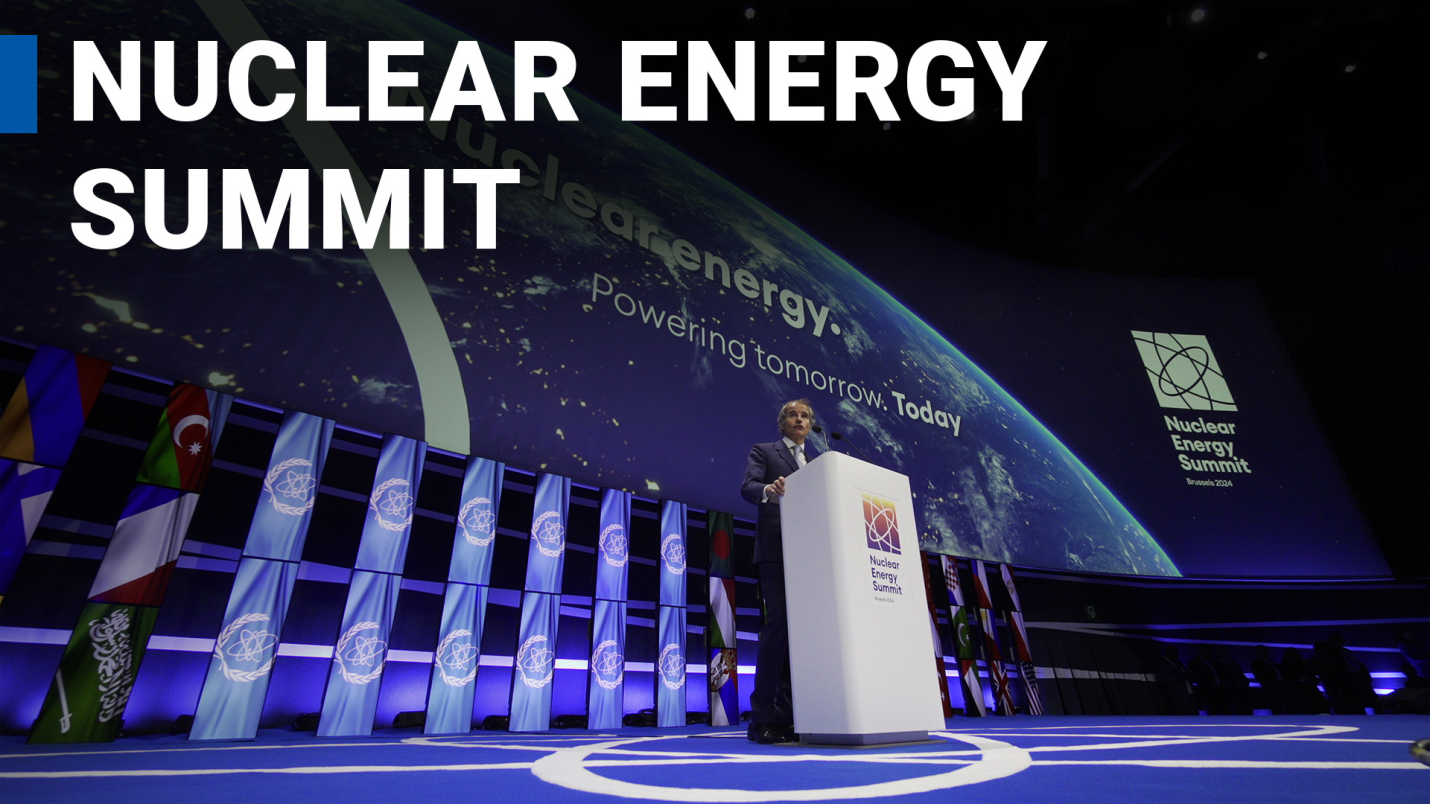Description
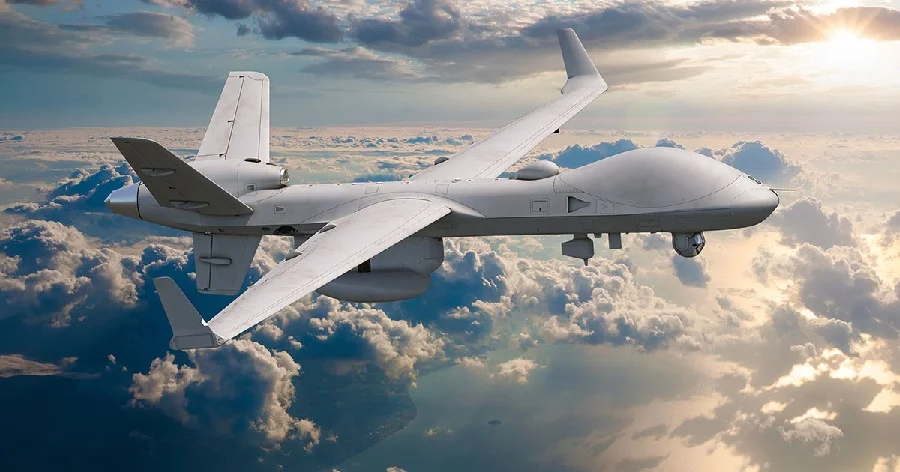
Copyright infringement not intended
Picture Courtesy: https://defence-industry.eu/u-s-approves-sale-of-31-mq-9b-skyguardian-drones-to-india/
Context: The U.S. State Department has formally notified the U.S. Congress about the potential sale of MQ-9B Remotely Piloted Aircraft and related equipment to the Government of India.
Details
- The US State Department approved the potential sale of 31 MQ-9B Sea Guardian drones to India in a deal valued at approximately $3.99 billion.
- This proposed sale marks a significant development in the growing strategic partnership between the US and India, and has generated considerable interest and discussion.
|
The sale is part of a broader trend of increasing defense cooperation between the US and India. The two countries have been working together on a number of initiatives, including joint military exercises and the development of new defense technologies. The sale of MQ-9B drones is likely to further strengthen this strategic partnership.
|
What are MQ-9B Sea Guardian drones?
- The MQ-9B Sea Guardian is a high-altitude, long-endurance (HALE) unmanned aerial vehicle (UAV) produced by General Atomics.
- It is a variant of the MQ-9B SkyGuardian drone, specifically designed for maritime patrol and reconnaissance missions.
- The Sea Guardian has a wingspan of 66 feet and can fly for up to 40 hours at an altitude of 40,000 feet.
- It is equipped with a variety of sensors, including electro-optical/infrared (EO/IR) cameras, radar, and maritime patrol radar, which allow it to collect intelligence on surface vessels, submarines, and other threats.
What does the proposed sale include?
- The proposed sale to India includes 31 MQ-9B Sea Guardian drones.
- It also includes ground control stations, spare parts, training, and support services.
- Additionally, the package includes 310 Small Diameter Bombs (SDBs) and 170 Hellfire missiles, which would equip the drones for offensive operations.
What are the potential benefits of the sale for India?
- The acquisition of MQ-9B Sea Guardian drones would significantly enhance India's maritime surveillance and reconnaissance capabilities.
- The drones would be able to patrol vast areas of the Indian Ocean, helping to deter and detect threats such as piracy, terrorism, and smuggling.
- The drones could also be used for search and rescue operations and disaster relief efforts.
- The deal would also boost India's defense ties with the United States, a key strategic partner.
What are the potential concerns about the sale?
- Some critics argue that the sale could escalate tensions in the region, particularly with Pakistan and China.
- Others express concerns about the potential for the drones to be used for civilian casualties or for extrajudicial killings.
- There are also concerns about the high cost of the drones and the potential for maintenance and operational challenges.
What is the current status of the sale?
- The US State Department has approved the potential sale, but it still needs to be approved by the US Congress.
- Congress has 30 days to review the sale before making a decision.
- If Congress approves the sale, India and the United States can then finalize the deal with a Letter of Offer and Acceptance (LoA).
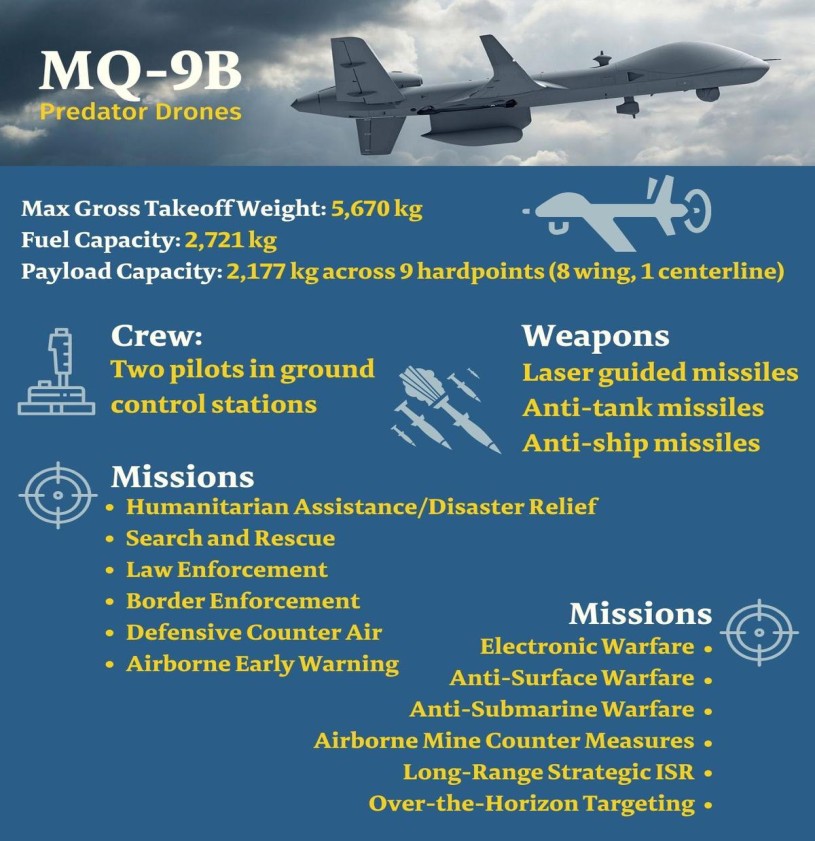
India- U.S. Defense Cooperation
- India and the United States have been steadily enhancing their defence cooperation in recent years, driven by shared interests and values in the Indo-Pacific region.
- The two countries have established a comprehensive global strategic partnership that covers almost all areas of human endeavour, including defence trade, technology, security, and military-to-military ties.
Defence Trade and Technology
- The U.S. has designated India as a Major Defense Partner (MDP) in 2016, which allows India to receive license-free access to a wide range of military and dual-use technologies regulated by the Department of Commerce.
- The S. has also elevated India to Strategic Trade Authorization tier 1 status in 2018, which enables India to access sensitive technologies without individual licenses.
- The S. has sold India some of its most advanced defence platforms and systems, such as the C-17 Globemaster III and C-130J Super Hercules transport aircraft, the P-8I Poseidon maritime patrol aircraft, the AH-64E Apache attack helicopters, the CH-47F Chinook heavy-lift helicopters, the M777 ultra-light howitzers, and the MH-60R Seahawk multi-role helicopters.
- The U.S. has also offered India the Sea Guardian unmanned aerial system (UAS), which is a Missile Technology Control Regime Category-1 platform that can enhance India's maritime domain awareness and surveillance capabilities.
|
Defence Technology and Trade Initiative (DTTI)
●The two countries have also established the Defence Technology and Trade Initiative (DTTI) in 2012, which aims to facilitate co-development and co-production of defence technologies and systems that are mutually beneficial and aligned with their national security interests.
●The DTTI has four joint working groups on land, naval, air, and aircraft carrier technologies. Some of the ongoing projects under the DTTI include the Air-Launched Unmanned Aerial Vehicle (ALUAV), the Lightweight Small Arms Technology (LSAT), the Mobile Electric Hybrid Power Sources (MEHPS), and the Next Generation Protective Ensemble (NGPE).
|
Defence Agreements and Arrangements
- The Logistics Exchange Memorandum of Agreement (LEMOA) in 2016, which allows both countries to access each other's military bases for logistical support such as refueling, replenishment, and maintenance.
- The Communications Compatibility and Security Agreement (COMCASA) in 2018, which enables both countries to share secure communications and data links for better situational awareness and coordination.
- The Industrial Security Agreement (ISA) in 2019, which facilitates greater collaboration between their defence industries by allowing them to exchange classified information for co-production and co-development projects.
- The Basic Exchange and Cooperation Agreement (BECA) in 2020, which allows both countries to share geospatial information such as maps, charts, imagery, and satellite data for improved accuracy of navigation and targeting.
- The Mutual Logistics Support Agreement (MLSA) in 2021, which expands the scope of LEMOA by allowing both countries to provide logistics support for each other's military operations across all domains.
Defense Dialogue
- The 2+2 Ministerial Dialogue, which involves the foreign and defense ministers of both countries meeting annually to review their strategic partnership and discuss regional and global issues.
- The Defence Policy Group (DPG), which is co-chaired by the defense secretaries of both countries and oversees the overall defense relationship.
- The Defence Procurement and Production Group (DPPG), which is co-chaired by the acquisition chiefs of both countries and focuses on defense trade and technology cooperation.
- The Military Cooperation Group (MCG), which is co-chaired by senior military officers of both countries and coordinates military-to-military engagement.
- The Executive Steering Groups (ESGs), which are led by service chiefs of both countries and guide service-specific cooperation.

Defense Exercises
- Malabar, which is a naval exercise involving India, the U.S., Japan, and Australia as part of the Quadrilateral Security Dialogue (Quad).
- Yudh Abhyas, which is an army exercise involving infantry units from both countries.
- Cope India, which is an air force exercise involving fighter jets from both countries.
- Tiger Triumph, which is a tri-service exercise involving land, sea, and air elements from both countries.
- Vajra Prahar, which is a special forces exercise involving commandos from both countries.
Defence Challenges and Prospects
- Balancing India's strategic autonomy and the U.S.'s alliance commitments, especially in the context of the rising tensions between the U.S. and China in the Indo-Pacific region.
- Streamlining the defence acquisition and procurement processes, especially in terms of reducing delays, costs, and bureaucratic hurdles.
- Enhancing defense industrial cooperation, especially in terms of increasing the participation of the private sector, small and medium enterprises, and start-ups in both countries.
- Expanding defense technology cooperation, especially in terms of identifying and pursuing cutting-edge and disruptive technologies such as artificial intelligence, quantum computing, hypersonic weapons, and biotechnology.
- Deepening the defense partnership, especially in terms of exploring new areas of cooperation such as space, cyber, counter-terrorism, and peacekeeping.
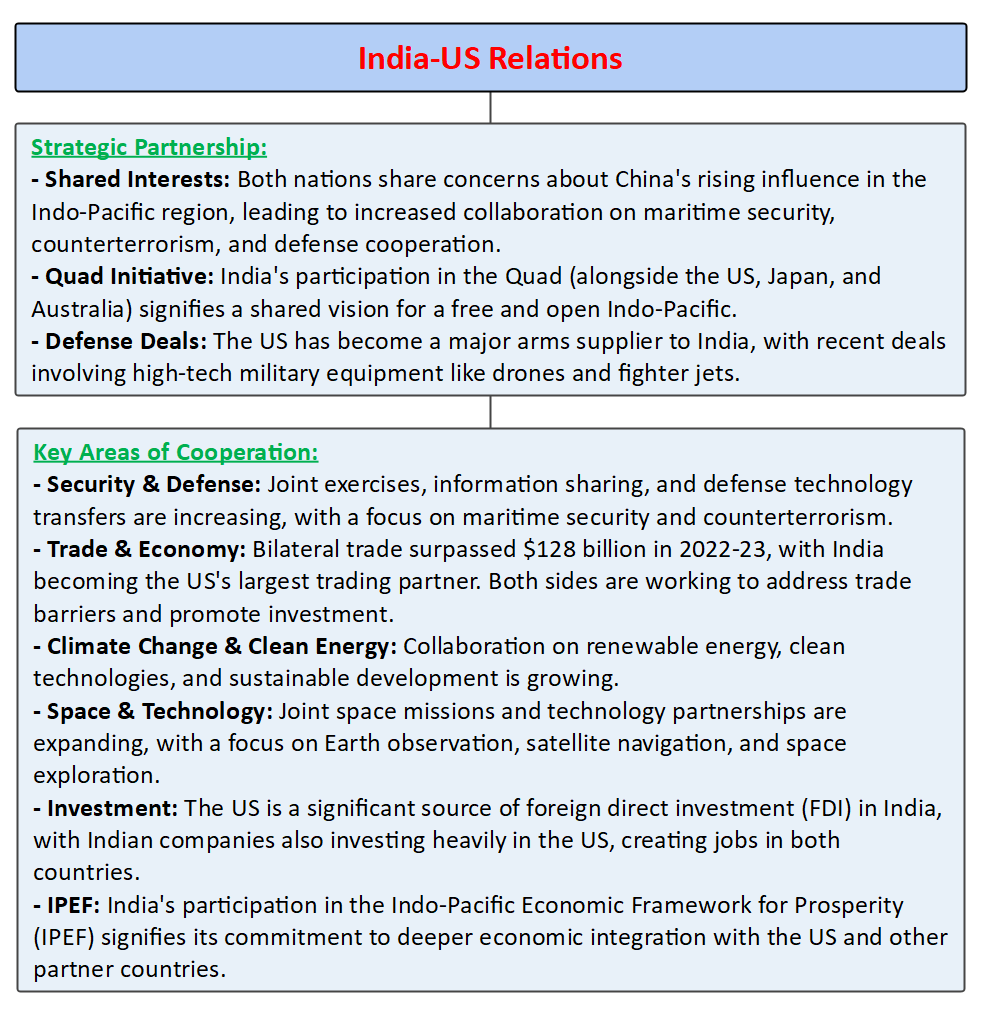
Conclusion
- India and the U.S. have come a long way in their defense cooperation since the end of the Cold War. They have built a robust and resilient partnership that is based on mutual trust, respect, and benefit. They have also demonstrated their commitment to uphold a free and open Indo-Pacific region that is conducive to peace, stability, and prosperity. As they face the emerging challenges and opportunities in the 21st century, they have the potential to take their defense cooperation to new heights and make it a cornerstone of their global strategic partnership.
Must Read Articles:
INDIA-US TIES: https://www.iasgyan.in/daily-current-affairs/india-us-ties-15
|
PRACTICE QUESTION
Q. The Quad, a grouping of India, the US, Japan, and Australia, aims to ensure a free and open Indo-Pacific. Can this arrangement effectively counter China's influence and address broader regional challenges, considering the diverse priorities of its members?
|















